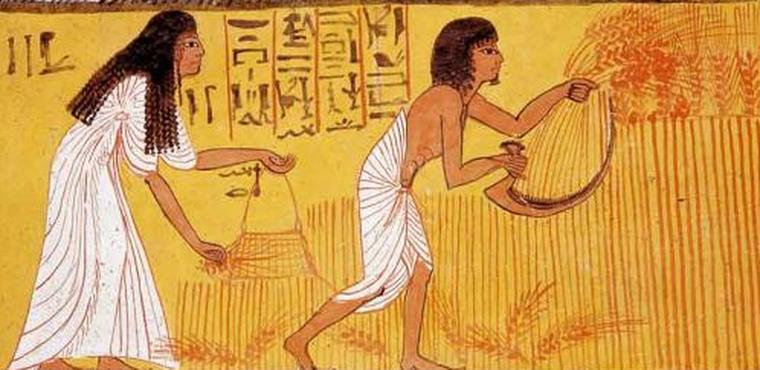Have you ever wondered how early civilizations determined their pregnancy status without using a modern-day pregnancy kit? According to an ancient Egyptian manuscript translated by experts at the University of Copenhagen reveals an outdated method of determining the sex of a baby and a woman’s pregnancy through the sprouting of grains.
Egyptian papyrus manuscripts dated 3,500 years ago describe the unconventional method of determining a pregnancy by peeing in bags of wheat and barley. If the seeds sprouted, it indicated pregnancy. This test was 70% accurate.
The First Recorded Pregnancy Test
Sayings regarding the sex of a baby in correlation with the mother’s body are passed down from generation to generation, circulating almost every region of the world. Sayings determine whether the baby will be a girl or a boy from the pregnant woman’s cravings to her sleeping routines.
But whether it be through prognostications, pregnancy symptoms, or unconventional methods, how did people know they were pregnant before the revolutionary take-home pregnancy kits?
Translated by experts, Egyptian papyrus manuscripts from more than 3,000 years ago depict antiquated methods for determining the pregnancy status of a mother. Kept in the University of Copenhagen, the unreleased text commonly known as The Papyrus Carlsberg Collection contained an array of subjects. The collection discussed many sciences like medicine, astronomy, and botany practiced during the period of Ancient Egyptians. (Source: CNET)
Within the Egyptian manuscript, a woman will urinate on a sack of wheat and a separate bag of parsley. The bag that sprouts first will confirm the pregnancy of the lady and the sex of the baby. If the wheat sprouts, the baby will be a girl, and if the barley sprouts, the baby is a boy. If no sprouting occurs, the woman isn’t pregnant. The Egyptian pregnancy method is also present in German sayings from the 1960s.
Many of the ideas in the medical texts from Ancient Egypt appear again in later Greek and Roman texts. From here, they spread further to the medieval medical texts in the Middle East, and you can find traces all the way up to premodern medicine.
Sofie Schiødt
(Source: Smithsonian Magazine)
The Science Behind the Egyptian Pregnancy Test
One might wonder if the Egyptian pregnancy test holds any accuracy and science behind their outdated methods. Fret not as a study published in the 1960s investigated the reliability of the ancient trial.
A study published through the Medical History journal entitled On an Ancient Egyptian Method of Diagnosing Pregnancy and Determining Foetal Sex discovered that the pee of non-pregnant women and men fostered no growth from the bags of wheat and barley. Contrarily, 70% of pregnant women’s urine induces the sprouting of the grain.
Although the Egyptian Pregnancy Test accurately determined the woman’s pregnancy status, it did not correctly predict the sex of the baby. Experts theorize that increased estrogen levels within the urine of the pregnant aided in the grain’s growth. (Source: Smithsonian Magazine)
It is concluded that when growth occurs, the urine is presumably that of a pregnant woman, but the reverse is not necessarily true… The sex of the unborn child cannot be predicted from the kind of cereal that grows faster.
Medical History
